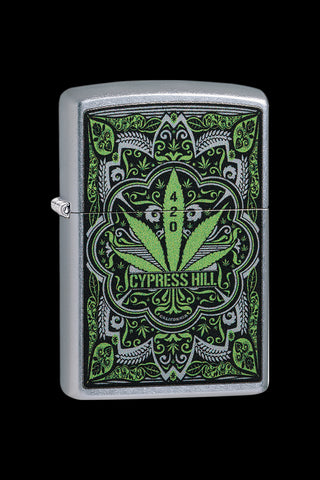Glass bongs are one of the most popular and versatile ways to enjoy your favorite herb or tobacco. They offer a smooth and flavorful smoking experience, as well as a variety of designs and features to suit your personal preferences and style. But how did glass bongs come to be, and what are some of the latest trends and innovations in the glass bong industry and community? Let’s take a look at the evolution of glass bongs and some of the new developments that are changing the game.
The history of glass bongs
Glass bongs have a long and rich history that dates back to ancient times. The word “bong” comes from the Thai word “baung”, which refers to a cylindrical bamboo tube used for smoking. The earliest evidence of bong use comes from Africa, where tribes used ceramic and metal pipes to smoke cannabis and tobacco. Bongs were also used in Asia, especially in China, India, and Persia, where they were made of bronze, brass, or silver.
The first glass bongs were invented in the 16th century by the German glassblowers, who used a technique called lampworking to shape molten glass into pipes. These pipes were often decorated with intricate patterns and colors, and sometimes featured water chambers to cool and filter the smoke. Glass bongs became popular in Europe, especially among the aristocracy, who enjoyed them as a status symbol and a way to indulge in exotic herbs.
Glass bongs reached America in the 18th century, when they were brought by European settlers and traders. They were mainly used for tobacco smoking, as cannabis was not widely available at the time. Glass bongs remained a niche product until the 1960s and 1970s, when the counterculture movement and the hippie subculture embraced them as a way to express their freedom and creativity. Glass bongs also became more accessible and affordable, thanks to the mass production and distribution by companies like Graffix, which introduced the first acrylic bong in 1970.
The evolution of glass bongs
Glass bongs have evolved significantly since the emergence of the paraphernalia industry, as new technology and innovative designs impact their production. Today, consumers can choose from various glass bongs in different shapes, sizes, and styles. Some of the most common types of glass bongs are:
- Beaker bongs: These bongs have a wide base that resembles a laboratory beaker, which provides stability and water capacity. They are easy to use and clean, and offer a classic smoking experience.
- Straight tube bongs: These bongs have a simple cylindrical shape that delivers a direct and powerful hit. They are also easy to use and clean, but require more lung capacity than beaker bongs.
- Bubbler bongs: These bongs are smaller and more portable than regular bongs, but still feature a water chamber that cools and filters the smoke. They are ideal for discreet and on-the-go smoking.
- Percolator bongs: These bongs have one or more chambers that contain small holes or slits that create bubbles when the smoke passes through them. This increases the surface area of the smoke, making it smoother and cooler. Percolator bongs come in various designs, such as tree, showerhead, honeycomb, turbine, etc.
- Recycler bongs: These bongs have two chambers that are connected by a tube or a loop. The smoke travels from the first chamber to the second chamber, where it is filtered by water again before being inhaled. This creates a continuous cycle of filtration that enhances the flavor and smoothness of the smoke.
While the traditional designs of glass bongs have remained popular, innovations have revolutionized the industry. For example:
- The emergence of silicone bongs creates an alternative to durable and travel-friendly glass. Silicone is flexible, heat-resistant, shatter-proof, and easy to clean. Silicone bongs also come in various colors and shapes that appeal to different tastes.
- Glass ice molds have been launched, adding a new level of precision for the ice pinch in bongs. Ice pinch is a feature that allows users to place ice cubes in the neck of the bong to cool down the smoke even more. Glass ice molds are designed to fit perfectly into specific models of glass bongs, ensuring optimal performance.
- Smartphone app-controlled LED lights have been integrated into some glass bongs, creating a customizable and interactive smoking experience. Users can change the color and intensity of the lights, as well as sync them with music or mood. LED lights also enhance the aesthetic and visibility of the smoke and the water.
The future of glass bongs
The glass bong industry and community are constantly evolving, as new trends and innovations emerge. Some of the possible future developments are:
- The use of 3D printing to create personalized and unique glass bongs. 3D printing allows users to design and print their own bongs, or choose from a variety of templates and models. 3D printing also enables the creation of complex and intricate shapes and features that are difficult to achieve with traditional glassblowing.
- The incorporation of smart technology and artificial intelligence into glass bongs. Smart bongs could have features such as voice control, temperature control, dosage control, health monitoring, etc. Smart bongs could also connect to other devices and platforms, such as social media, gaming, or streaming.
- The development of eco-friendly and sustainable glass bongs. Eco-friendly bongs could be made of recycled or biodegradable materials, such as hemp, bamboo, or cornstarch. Eco-friendly bongs could also have features that reduce water and energy consumption, such as self-cleaning or solar-powered mechanisms.
Glass bongs are more than just smoking devices. They are also expressions of art, culture, and personality. The glass bong industry and community are always looking for new ways to improve and innovate their products, as well as to share and enjoy their passion. Glass bongs are here to stay, and they will continue to surprise and delight us with their diversity and creativity.





